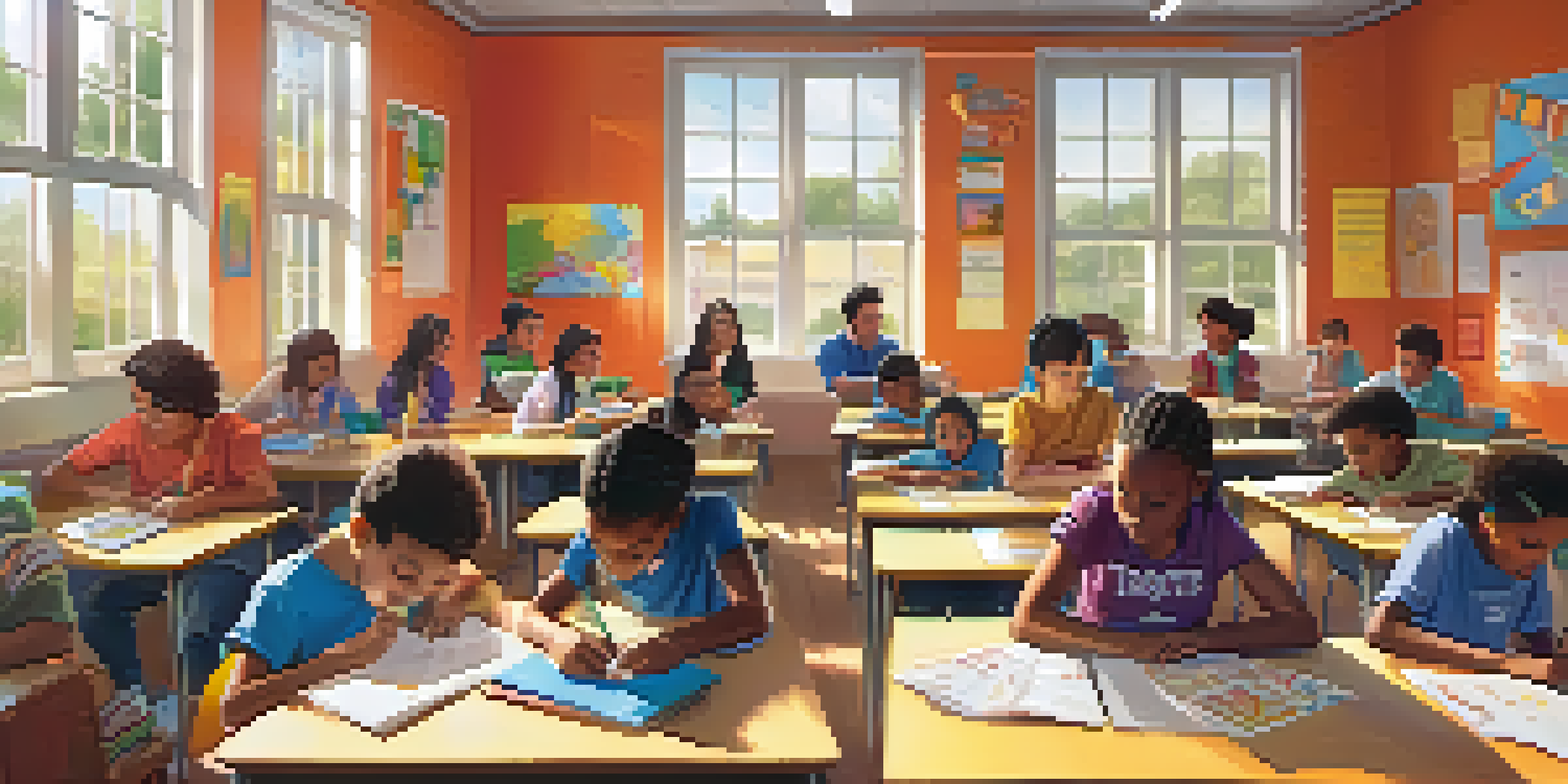Creating Cross-Curricular Gamification Experiences in Schools

Understanding Cross-Curricular Gamification in Education
Cross-curricular gamification blends different subjects into interactive learning experiences. By integrating math, science, language arts, and more, educators can foster a holistic understanding of concepts. Think of it as a puzzle where each piece represents a different subject, coming together to create a complete picture of knowledge.
Gamification is not just about adding points and badges; it's about creating engaging experiences that facilitate learning and foster collaboration.
This approach not only makes learning more engaging but also mirrors real-world scenarios where disciplines intersect. For example, a project might involve students creating a budget for a science experiment, incorporating both math and scientific inquiry. This method encourages students to see the relevance of what they learn in a broader context.
Moreover, gamification adds an element of fun and competition, motivating students to participate actively. When students earn points or badges for completing tasks across subjects, it creates a sense of achievement that drives their desire to learn.
Benefits of Gamification in Cross-Curricular Learning
Gamification offers numerous benefits for educators and students alike. It enhances engagement by transforming traditional lessons into exciting challenges. When students view learning as a game, they’re more likely to participate and retain information.

Additionally, gamification can improve critical thinking and problem-solving skills. By presenting students with scenarios that require them to apply knowledge from multiple subjects, they develop a deeper understanding of the material. It’s like training for a triathlon, where you prepare for various challenges rather than just focusing on one.
Engaging Learning Through Gamification
Gamification transforms traditional lessons into exciting challenges, enhancing student engagement and information retention.
Lastly, this approach promotes collaboration among students. Working on cross-curricular projects encourages teamwork, as students must communicate and share their unique skills to achieve a common goal. This collaborative spirit not only makes learning more enjoyable but also prepares students for future group endeavors.
Designing Effective Gamified Learning Experiences
Creating a successful gamified experience involves thoughtful design and planning. Start by identifying the learning objectives for each subject you want to integrate. This clarity will guide the development of activities that align with educational goals while being enjoyable.
Education is the most powerful weapon which you can use to change the world.
Next, consider incorporating elements of storytelling. A captivating narrative can engage students and provide context for their tasks. For example, a quest to save a fictional kingdom can involve math challenges, science experiments, and literary analysis, all woven into the storyline.
Finally, gather feedback from students to refine the gamified experience. Understanding what they enjoyed or found challenging can help you adjust future lessons. This iterative process ensures that learning remains dynamic and tailored to student needs.
Examples of Cross-Curricular Gamification in Action
One great example of cross-curricular gamification is a 'Science Fair Quest' where students explore various scientific principles while competing in teams. They might conduct experiments, create presentations, and manage budgets, drawing on skills from math and language arts. The added competitive element keeps students motivated and invested in their learning.
Another example could be a 'Historical Mystery Game,' where students must unravel a mystery by researching historical events and figures. This project could involve writing reports, creating timelines, and even performing skits, blending history with art and communication skills. Such experiences help students appreciate how different subjects interconnect.
Collaboration in Cross-Curricular Projects
Cross-curricular gamification promotes teamwork by encouraging students to work together on projects that integrate multiple subjects.
These projects not only enhance engagement but also allow for creativity and critical thinking. By participating in these gamified experiences, students develop a more comprehensive understanding of the subjects while enjoying the process.
Technology's Role in Gamification for Schools
Technology plays a crucial role in facilitating gamification in education. Various tools and platforms exist that allow educators to create digital games and simulations that enhance learning. For instance, platforms like Kahoot! and Quizizz enable teachers to design quizzes that make learning interactive and fun.
Additionally, virtual reality (VR) can transport students to different environments, providing immersive experiences that traditional classrooms cannot offer. Imagine students exploring ancient civilizations or conducting virtual science experiments, all while collaborating with their peers.
Using technology not only enriches the learning experience but also prepares students for a tech-driven world. Familiarizing them with digital tools fosters skills that are essential in today’s workforce, making gamification a valuable educational strategy.
Challenges of Implementing Gamification in Education
While gamification offers many benefits, it also comes with its challenges. One common hurdle is the initial resistance from educators who may be unfamiliar with gamification strategies. It can take time and training to develop the skills needed to create effective gamified lessons.
Another challenge is ensuring that the gamified elements align with curriculum standards. It's important to strike a balance between fun and educational value, so students are not simply playing for the sake of playing. Careful planning and alignment with learning objectives is essential for success.
Challenges in Educational Gamification
Implementing gamification can present challenges such as resistance from educators and ensuring equitable access to technology for all students.
Finally, there may be disparities in access to technology among students. Ensuring that all students have equal opportunities to engage with gamified learning is crucial. Educators must be mindful of these gaps and consider alternative methods for those who may not have the same access.
Future Trends in Cross-Curricular Gamification
As education continues to evolve, so too will gamification strategies. Future trends may see even more integration of augmented reality (AR) and artificial intelligence (AI) into learning experiences. These technologies can create highly personalized and interactive lessons that adapt to each student's needs.
Additionally, the rise of remote learning has prompted educators to innovate their approaches to gamification. Online platforms will likely continue to expand, offering more tools for creating engaging, cross-curricular experiences that can be accessed from anywhere.

Ultimately, the future of cross-curricular gamification holds exciting possibilities. By embracing these trends, educators can create more inclusive, dynamic, and effective learning environments that prepare students for an increasingly complex world.